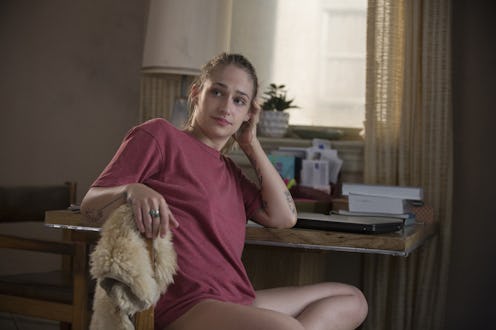
With the end of Girls comes the end of an era. Lena Dunham’s piece de resistance about the trappings and mistakes of millennials of a certain city (and probably many other cities, too) drew ire, praise, and plenty of talk. Perhaps one of the most polarizing shows of the past decade, Girls perfectly captured the women of a certain generation and also changed the way women are portrayed on television, and the world will be without as the show airs its final episodes.
That’s not to say that shows about young women haven’t been developed in the past 50 years. Programs like The Mary Tyler Moore Show, Rhoda, and Sex And The City showed the lives of young urban women as they navigated singledom, their jobs, and their friends. But the thing about these shows was that they were so polished. Mary may have struggled at work, but she had her best friend Rhoda through thick and thin! Carrie may have cheated on Aidan with Big, but she was just out there chasing her great love and living in New York City, so it would all turn out OK! Right?
Sex And The City, to isolate it, took place in a time of relative prosperity in the United States, and high school and college-age women aspired to live Carrie and Samantha’s life of New York cool, dating, and plenty of cocktails. But with the 2008 recession, life changed — fast. People in their 20s who wanted that Sex And The City ideal graduated with no job prospects and a ton of student debt and still decided to move to New York anyway, a New York City where rents are still rising and jobs are still scarce.
And so entered Hannah, Marnie, Shoshanna, and Jessa, four women who were still on their parents’ bankroll but so wanted to be adults. Carrie and company had faults, but Hannah and her friends walked the line (and crossed it, too) of unlikeable so many times over the show’s six seasons. While this may not seem like a big deal, unlikeable women are a hard sell. Unlikeable men are gruff and tough and damaged, but unlikeable women are shrews or harpies that need to get laid or whose feminism has failed them. See the difference there? None of the women on Girls were able to truly to take responsibility for themselves for a majority of the show’s tenure, and it was refreshing to see screw ups that looked like me and talked like me and my guileless-but-clueless friends on television.
All of the characters on Girls treated each other terribly at one point or another, as many 20-somethings are bound to do with their friends. People, in finding out who they are, fight, sleep with friend’s boyfriends, quit jobs, declare themselves geniuses, and find new roommates. Never before Girls has a show revealed the complexities and indignities of being in your 20s in such a relatable way. Being about the same age as Hannah and her lot while the show was airing, it was like I was watching a documentary about the people I knew and the New York I saw every day.
Now, shows like Broad City, Insecure, and many others are filling in the glaring gaps in the female story, but Girls was the one to do it first. Girls couldn’t exist in any other time – Hannah’s generation (and mine) was the first to graduate and come of age in a world that didn’t have a place for them. We were told that we could be anything we wanted and given trophies for participation and went to college like “they” said, and in the end, there was nothing waiting at the end of the rainbow. As women, we could do everything (in theory) that our male counterparts did, but what was it that we really wanted? Dunham’s storytelling highlighted the struggles of being a woman and finding yourself in the midst of total chaos, and it wasn’t always pretty. Often times it was insane, infuriating, eye roll-inducing, and painful to watch. But despite all of that, it was important, and Dunham’s contribution to television will be recognized long after the “girls” have grown up. So, yes, Girls may be over, but its legacy will endure.